The Looking Glass in "Lost Vegas: Tim Burton @ The Neon Museum"
This past October, renowned film director, producer, writer, and animator Tim Burton launched Lost Vegas: Tim Burton @ The Neon Museum in Las Vegas, Nevada. Open until February 15th 2020, Lost Vegas serves as a retrospective that features massive new sculptural, neon, and mixed-media artworks, many of which are site-specific creations. As this is the first time in almost a decade that Burton's original artwork has been on display to the public, new technologies were sought out to add a contemporary touch to an already ambitious endeavor by the visionary artist.
A particularly bright spot of the exhibit was a dimly lit dome displaying a collection of Burton's analog sketches entitled Holographic Drawings and Paintings. The dome intentionally evoked the feel of a 1960's cosmic Vegas casino and featured a wall embedded with several of Burton's original paintings & drawings–each brought to holographic life via the Looking Glass.
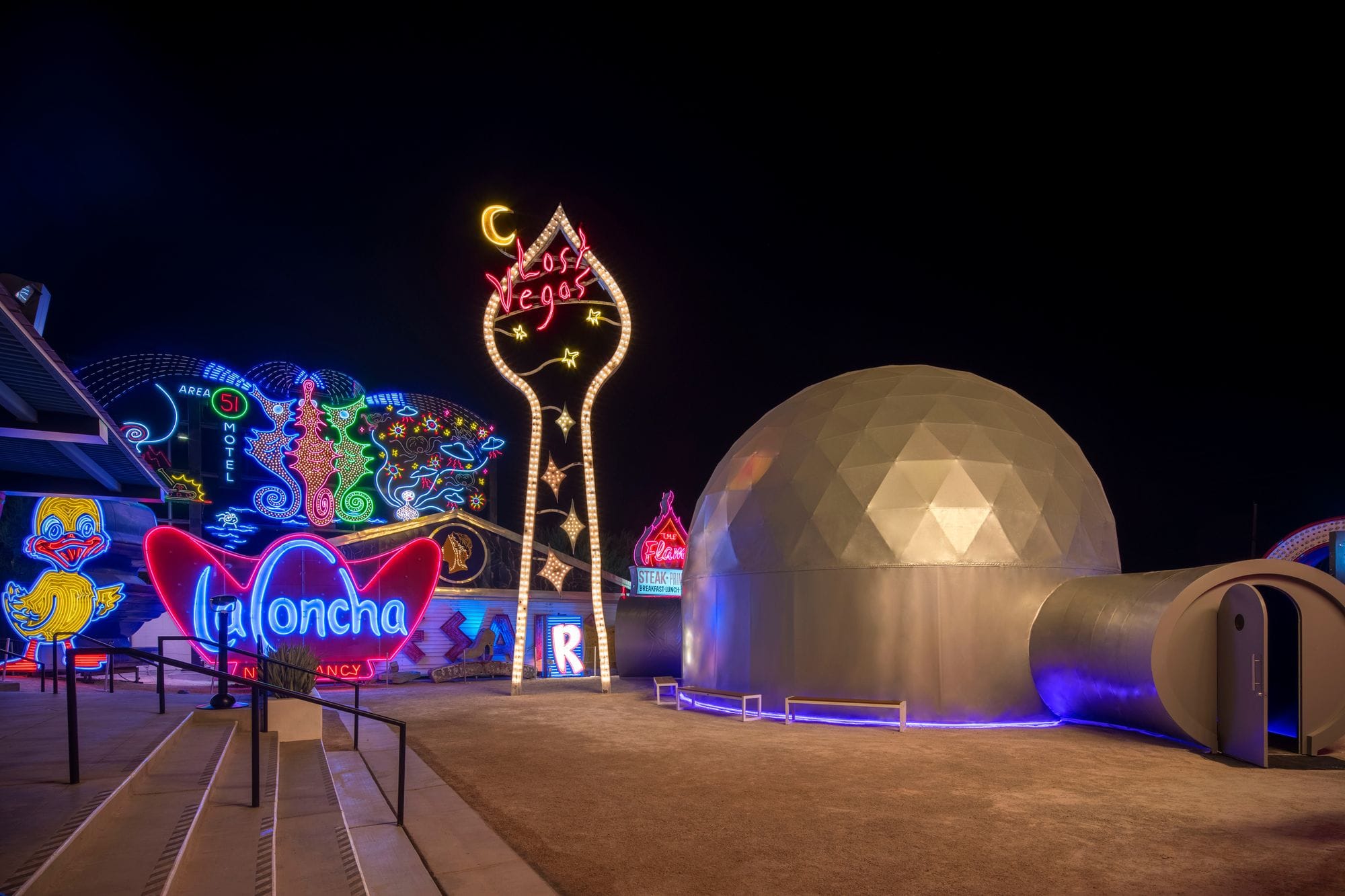
"Embedded inside the walls are holographic translations of Burton’s drawings & paintings, works brought to life with Looking Glass holographic technology, reflecting specific memories that Burton has of Las Vegas...a melancholy yet enticing animatronic and digital installation which encapsulates the exhibition’s theme and what Las Vegas embodies to Tim Burton: charming, magical, and strange."
-- Craig Winslow, Lead Designer,
Lost Vegas
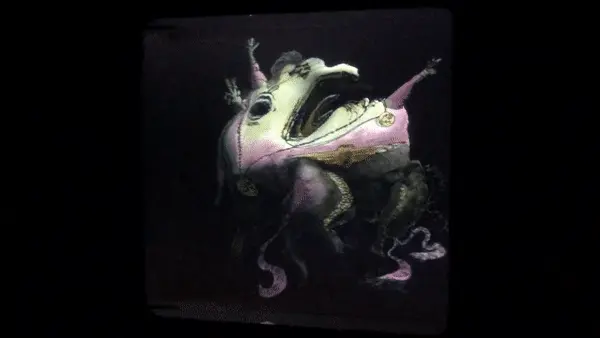
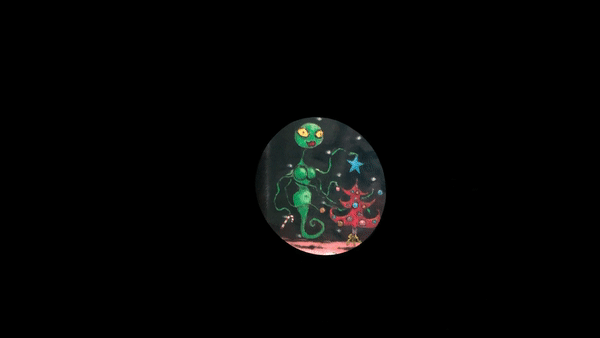
Craig Winslow, Lead Designer of Lost Vegas, had been introducing Burton to a myriad of pre-visualization tools and emerging mediums for this installation until they decided that the Looking Glass was the ideal display system for the dome area.
"I’ve been impressed with [the] Looking Glass for a while now and thought it could be a fascinating new outlet for Tim’s analog sketches, embedded within the walls of a large custom dome structure we were building. He was very excited once he saw the displays in person— so much so that we ended up using 11 of them within the exhibition; 9 [8.9" Development Kits], 2 [15.6" Development Kits] Looking Glass displays, embedded in the walls with different shape masks to make them appear cropped square, wide, or round."
-- Craig Winslow, Lead Designer, Lost Vegas
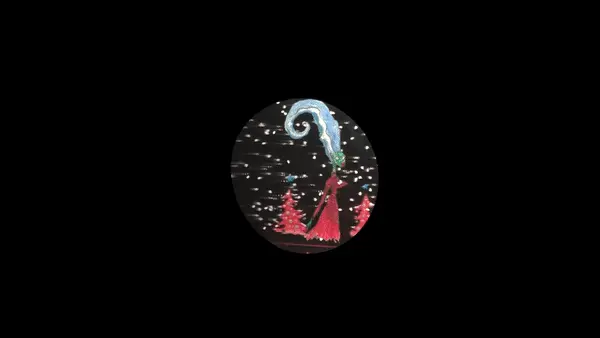
Beginning with scans of flat sketches, each piece was separated into isolated layers in Photoshop and modeled in 3D using Blender to create depth and prebuild scenes. They were then imported and assembled in Unity 3D, where particles, lighting, and animations were added.
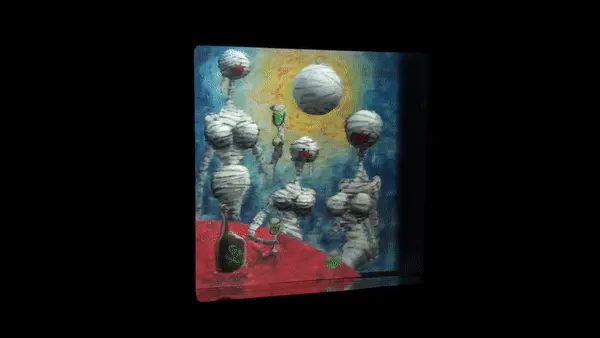
Though notorious for his love of all things analog, it didn't take more than a few glances before even Tim Burton was sold on the viscerally immersive nature of the Looking Glass.
To be honest, upon experiencing the Looking Glass in person, we quickly decided it was the ideal solution to bring to life Tim Burton’s childhood memories.
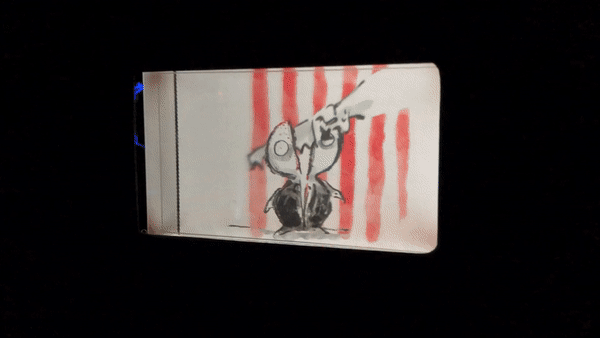
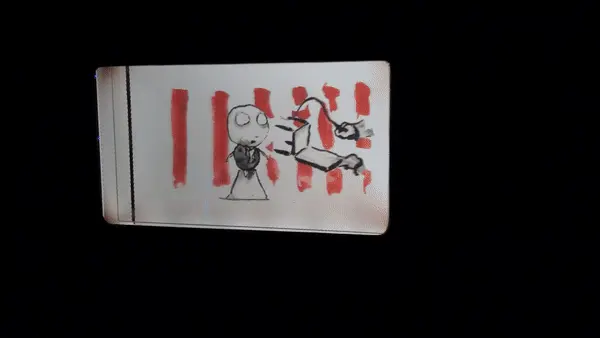
In this case the Looking Glass provided not only a technological purpose, but also a functional one–as viewers wouldn't need to wear any extra headgear or equipment. This ensured that Lost Vegas attendees would be able to view Tim Burton's creations while still enjoying an uninterrupted & frictionless viewing experience that they could share with each other.
Being able to see true depth without needing to wear any additional trackers or devices add that much more to the pursuit of magic.
Craig Winslow is a light artist and experiential designer with a passion for blending the physical and digital, and a fascination with how we incorporate the past within the future. His 2016 Adobe Creative Residency illuminated ghost signs around the world and his work has been featured in The Great Discontent, The Atlantic, and Creative Review. He’s worked with clients including NikeLab, Portland Trail Blazers, Princeton University. In 2018 his permanent exhibition ‘Brilliant!’ launched at The Neon Museum. His creative pursuits focus on using a mix of new, old, and emerging technologies— aiming to please with playful, clever, and charming experiences. Learn more about his work here.
